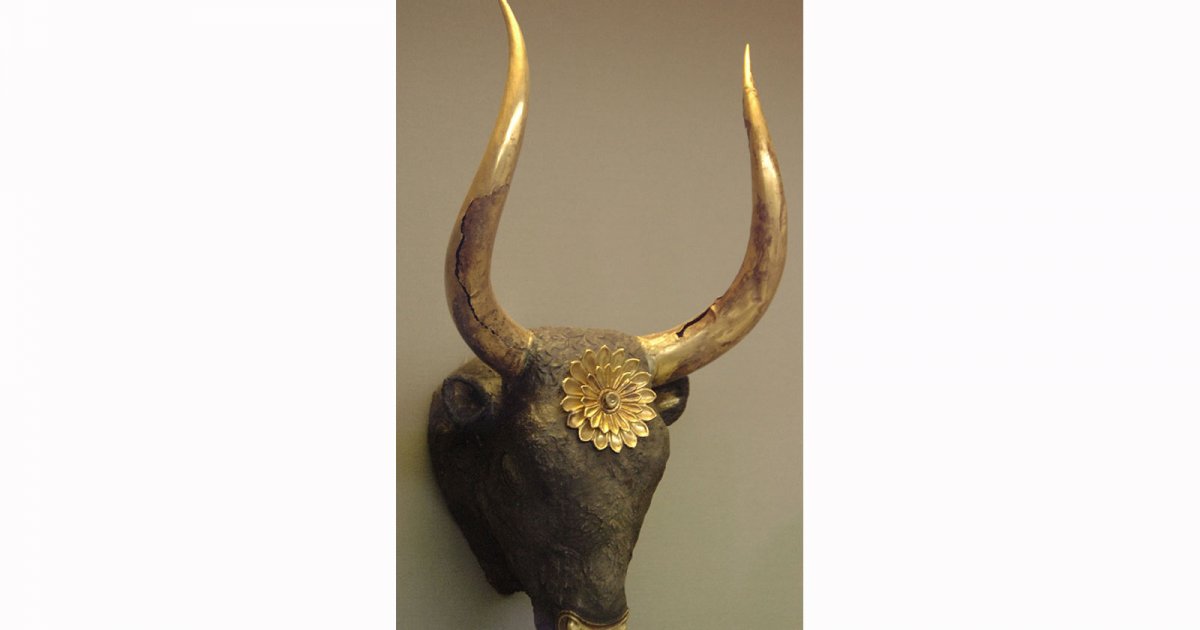ARCHEOLOGICAL MUSEUM, Bull's-Head Rhyton Room 04B
 Language: English / USA
Language: English / USA
As you can see, the “Bull’s-Head Rhyton” is a magnificent work. It was made around 1600 BC and placed in a royal tomb in Mycenae together with some exceptionally fine funerary accoutrements, befitting the warrior princes of Mycenae, referred to as the “golden” city by Homer.
The Rhyton is a container for liquids. What is unusual about it is that it cannot be set down because it does not have a base, and that it has a hole in the lower part so that drinking could not be interrupted until it had been drained of all the liquid inside. In Antiquity, these vessels were often fashioned in the shape of a horn, or the head of an animal.
As you’ll have realized, this was not an object for everyday use, and was for special occasions and only had ritual purposes. The one before you, in gold and silver, undoubtedly belonged to a noble family, bound to the aristocratic values of hunting and war. Once filled, the entire contents of the Rhyton had to be drunk immediately, which of course led to a state of inebriation.
The horns, the rosette on the forehead, the eyes and the nose of the bull are laminated in gold, probably a reference to the Mycenaean custom of covering bulls’ horns with gold when they were destined for sacrifice. The cult of the bull, alluding to physical strength, is widely documented in the Greek world of 3500 years ago: in the palace of Knossos, on the island of Crete, there are paintings of athletes engaged in dangerous exercises with a gigantic bull, and the buildings there were adorned with magnificent stone horns.
In this room, I would also like to point out the Vaphio Cups, crafted entirely in gold and featuring a superbly executed scene of the capture of wild bulls: while one is trapped in a net, another is treading on one hunter and goring another. The scene is depicted with tremendous realism and violence.
An interesting fact: do you know what everyday drinking vessels were made of in Ancient times, before the invention of glass and pottery? Hollowed-out animal horns. It is from these that the bull’s-head Rhyton is derived.



